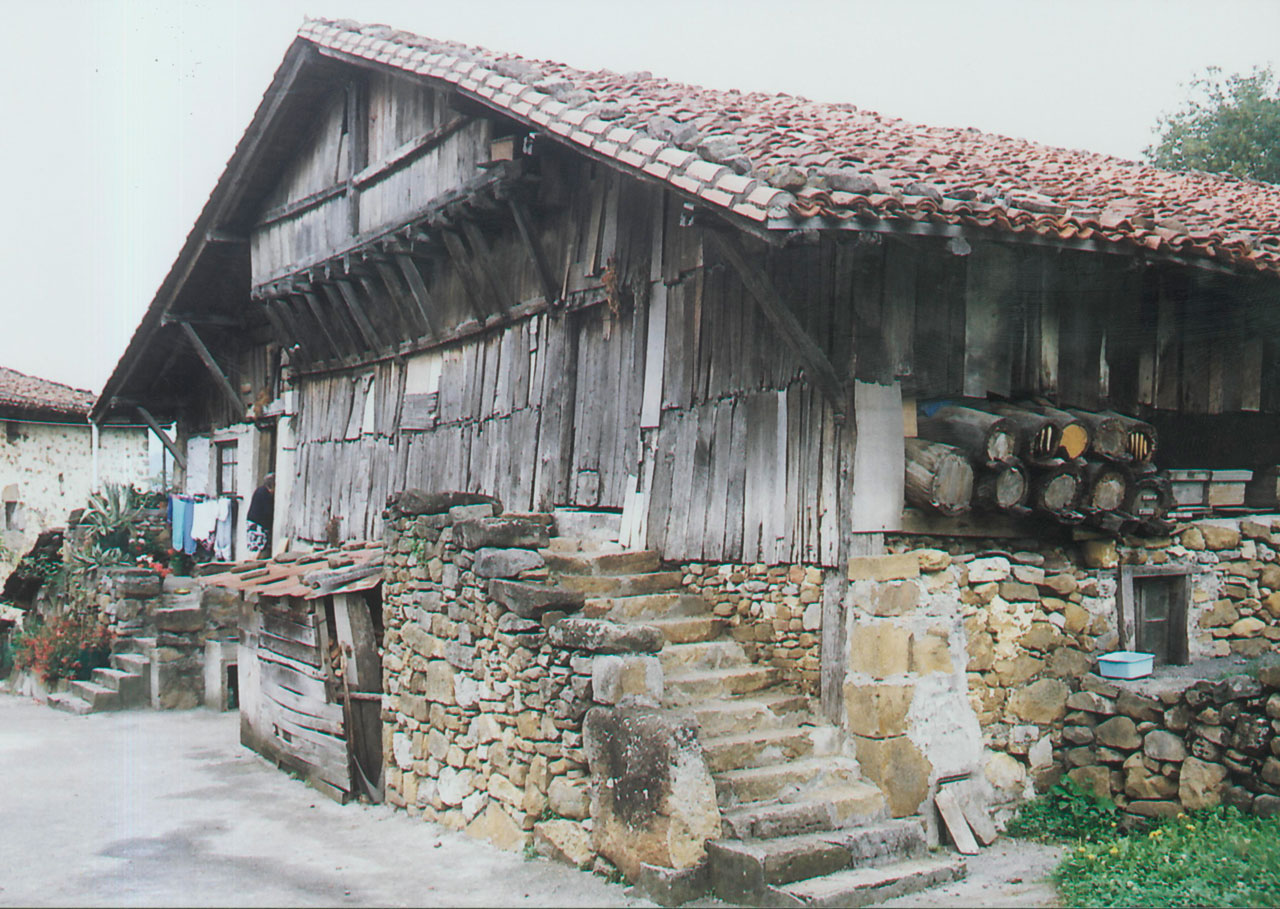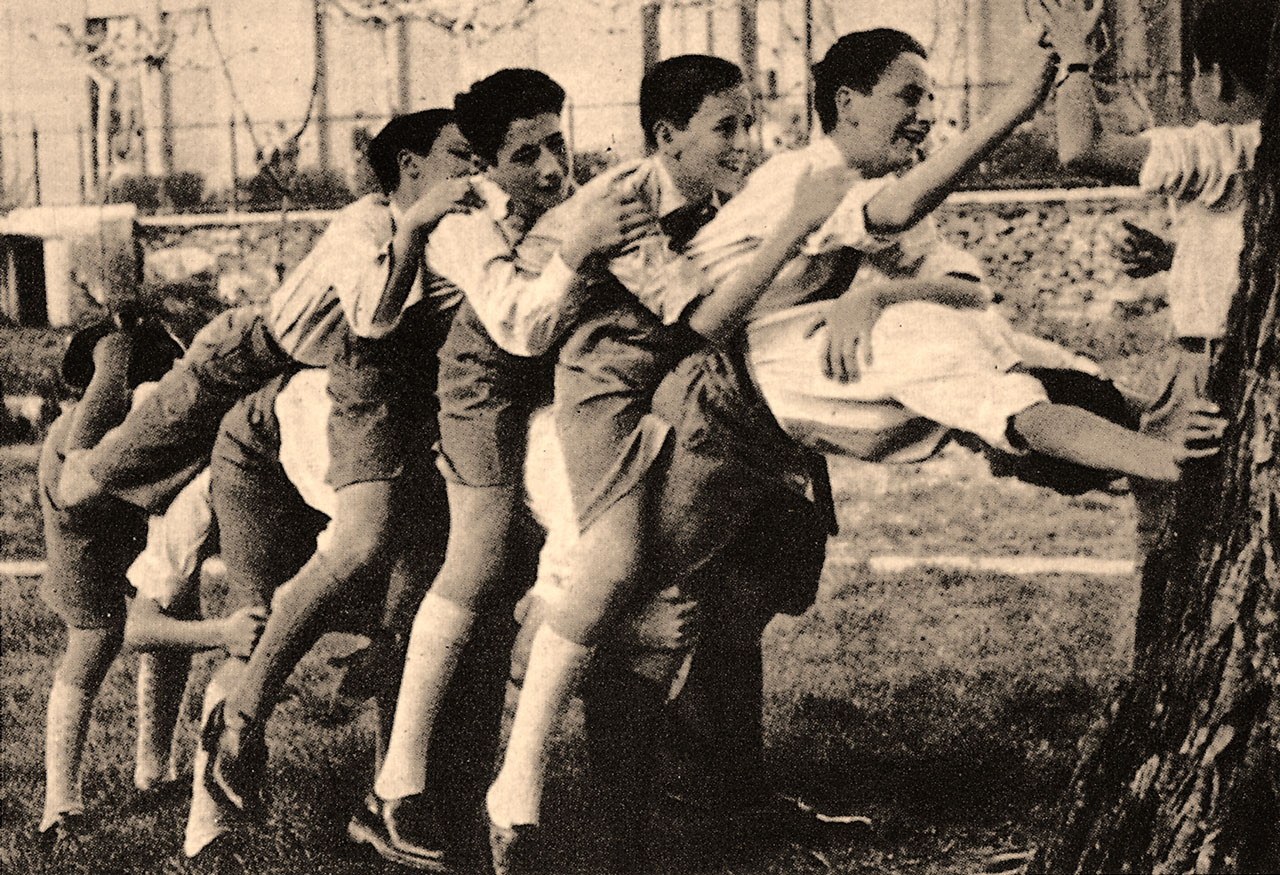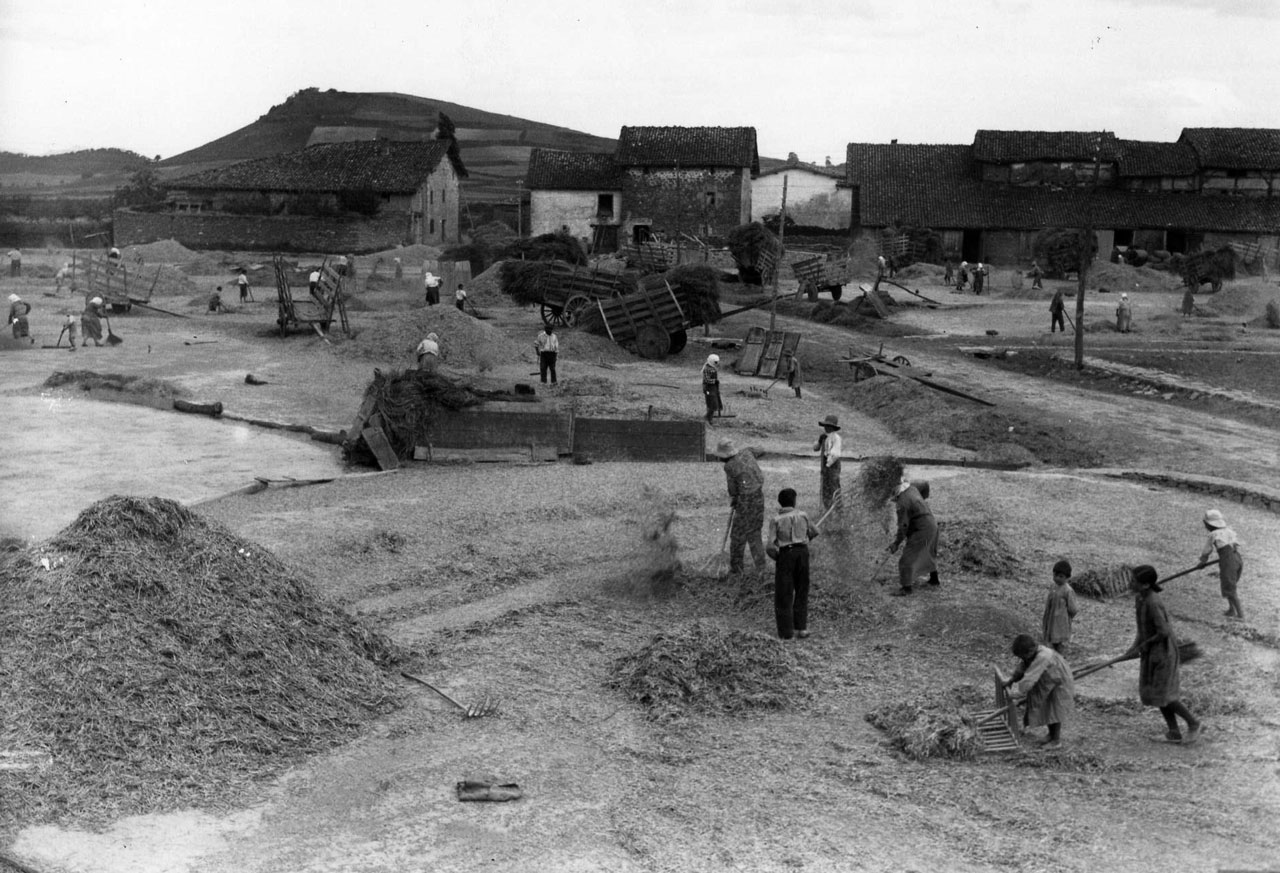Diferencia entre revisiones de «Main Page/en»
De Atlas Etnográfico de Vasconia
| Línea 59: | Línea 59: | ||
====[/atlas/alimentacion/Dando-brillo-al-pan.jpg|Brushing the loaves for a shiny crust. Source: Ander Manterola, Etniker Euskalerria Groups.|Nolako irina, halako ogia.<br /> | ====[/atlas/alimentacion/Dando-brillo-al-pan.jpg|Brushing the loaves for a shiny crust. Source: Ander Manterola, Etniker Euskalerria Groups.|Nolako irina, halako ogia.<br /> | ||
| − | ''Bad flour makes poor dough.''|| | + | ''Bad flour makes poor dough.''||]==== |
| − | ====[/atlas/alimentacion/Mercado-de-Navidad-Vitoria-Gasteiz-1977.jpg|Christmas market. Vitoria-Gasteiz, 1977. Source: Fernando Díaz de Corcuera, Etniker Euskalerria Groups.|Aza-olioak pil-pil, <br />bisigua zirt-zart, <br />gaztaina erreak pin-pan, <br />ahia goxo-goxo, epel-epel. <br /><br />''Traditional Christmas song''|| | + | ====[/atlas/alimentacion/Mercado-de-Navidad-Vitoria-Gasteiz-1977.jpg|Christmas market. Vitoria-Gasteiz, 1977. Source: Fernando Díaz de Corcuera, Etniker Euskalerria Groups.|Aza-olioak pil-pil, <br />bisigua zirt-zart, <br />gaztaina erreak pin-pan, <br />ahia goxo-goxo, epel-epel. <br /><br />''Traditional Christmas song''||]==== |
====[/atlas/alimentacion/Secado-Ispoure.jpg|Hanging for drying. Izpura (NB). Source: Peio Goïty, Etniker Euskalerria Groups.|Ezkonduko urtea eta txarria hildako astea, onenak. <br /> | ====[/atlas/alimentacion/Secado-Ispoure.jpg|Hanging for drying. Izpura (NB). Source: Peio Goïty, Etniker Euskalerria Groups.|Ezkonduko urtea eta txarria hildako astea, onenak. <br /> | ||
| − | ''The year when you marry and the week that pig is slaughtered are the best.''|| | + | ''The year when you marry and the week that pig is slaughtered are the best.''||]==== |
| − | ====[/atlas/alimentacion/Abriendo-los-cortes-tras-la-fermentacion.jpg|Scoring after fermentation. Source: Ander Manterola, Etniker Euskalerria Groups.|Donde no hay ni pan ni pollos, el horno no está para bollos. <br />''If there’s no bread or chicken, you shouldn’t bake rolls.''|| | + | ====[/atlas/alimentacion/Abriendo-los-cortes-tras-la-fermentacion.jpg|Scoring after fermentation. Source: Ander Manterola, Etniker Euskalerria Groups.|Donde no hay ni pan ni pollos, el horno no está para bollos. <br />''If there’s no bread or chicken, you shouldn’t bake rolls.''||]==== |
| − | ====[/atlas/alimentacion/Merienda-principios-del-siglo-20.jpg|Snack break, beginning of the 20th century. Source: Archive of the Chartered Government of Gipuzkoa: Indalecio Ojanguren Collection.|Goseak dagonarentzat, ogi gogorrik ez. <br />''The famished make a feast out of bread crumbs.''|| | + | ====[/atlas/alimentacion/Merienda-principios-del-siglo-20.jpg|Snack break, beginning of the 20th century. Source: Archive of the Chartered Government of Gipuzkoa: Indalecio Ojanguren Collection.|Goseak dagonarentzat, ogi gogorrik ez. <br />''The famished make a feast out of bread crumbs.''||]==== |
| − | ====[/atlas/alimentacion/Mercado-de-Santo-Tomas-Bilbao-1950.jpg|Ribera Market. Bilbao, beginning of the 20th century. Source: Labayru Fundazioa Photograhic Archive.|Food was grown on the family small holding or bought from local markets, which, in turn, were supplied with food grown locally. A few products, nearly always non-staples, complemented local or household self-supply.|| | + | ====[/atlas/alimentacion/Mercado-de-Santo-Tomas-Bilbao-1950.jpg|Ribera Market. Bilbao, beginning of the 20th century. Source: Labayru Fundazioa Photograhic Archive.|Food was grown on the family small holding or bought from local markets, which, in turn, were supplied with food grown locally. A few products, nearly always non-staples, complemented local or household self-supply.||]==== |
| − | ====[/atlas/alimentacion/Comida-a-bordo.jpg|Meal on board. Source: Aguirre Archive.|Nahiz dala udea, <br />nahiz dala negua, <br />goizeko zortziretan, <br />armozu ordua. <br /><br />''Folk song''|| | + | ====[/atlas/alimentacion/Comida-a-bordo.jpg|Meal on board. Source: Aguirre Archive.|Nahiz dala udea, <br />nahiz dala negua, <br />goizeko zortziretan, <br />armozu ordua. <br /><br />''Folk song''||]==== |
| − | ====[/atlas/alimentacion/Caserio-Olabide-Zerain-1982.jpg|Olabide Farmhouse. Zerain (G), 1982. Source: Karmele Goñi, Etniker Euskalerria Groups.|Sueteko laratzak jakiten dau etxeko barri. <br />''People show their true colours at home.''|| | + | ====[/atlas/alimentacion/Caserio-Olabide-Zerain-1982.jpg|Olabide Farmhouse. Zerain (G), 1982. Source: Karmele Goñi, Etniker Euskalerria Groups.|Sueteko laratzak jakiten dau etxeko barri. <br />''People show their true colours at home.''||]==== |
| − | ====[/atlas/alimentacion/Desgranando-habas.jpg|Broad bean podding. Source: Akaitze Kamiruaga, Etniker Euskalerria Groups.|Beans and broad beans were the most widely grown legumes and were traditionally an important part of the diet.|| | + | ====[/atlas/alimentacion/Desgranando-habas.jpg|Broad bean podding. Source: Akaitze Kamiruaga, Etniker Euskalerria Groups.|Beans and broad beans were the most widely grown legumes and were traditionally an important part of the diet.||]==== |
| − | ====[/atlas/alimentacion/Mercado-de-Santo-Tomas-Bilbao-1950.jpg|Market on St Thomas’ Day. Bilbao, 1950. Source: Sancho el Sabio Foundation.|Gabon, bon-bon; Natibitate, ase eta bete; San Estebantxe, lehen letxe. <br />''Eat heartily on Christmas Eve; until you feel full at Christmas; and back to normal on St Stephen’s Day.''|| | + | ====[/atlas/alimentacion/Mercado-de-Santo-Tomas-Bilbao-1950.jpg|Market on St Thomas’ Day. Bilbao, 1950. Source: Sancho el Sabio Foundation.|Gabon, bon-bon; Natibitate, ase eta bete; San Estebantxe, lehen letxe. <br />''Eat heartily on Christmas Eve; until you feel full at Christmas; and back to normal on St Stephen’s Day.''||]==== |
| − | ====[/atlas/alimentacion/Abrir-el-txotx-Gipuzkoa-1988.jpg|Txotx, cider tasting. Gipuzkoa, 1988. Source: Antxon Aguirre, Etniker Euskalerria Groups.|On dagizula janak eta kalterik ez edanak. <br />''Enjoy what you eat and drink.''|| | + | ====[/atlas/alimentacion/Abrir-el-txotx-Gipuzkoa-1988.jpg|Txotx, cider tasting. Gipuzkoa, 1988. Source: Antxon Aguirre, Etniker Euskalerria Groups.|On dagizula janak eta kalterik ez edanak. <br />''Enjoy what you eat and drink.''||]==== |
| − | ====[/atlas/alimentacion/Ronda-del-rosco-el-dia-de-San-Cristobal-Oquina-1986.jpg|Round of the roll on St Christopher’s Day. Oquina (A), 1986. Source: Gerardo López de Guereñu Iholdi, Etniker Euskalerria Groups. <br />''Bread and wine hold body and soul together.''|| | + | ====[/atlas/alimentacion/Ronda-del-rosco-el-dia-de-San-Cristobal-Oquina-1986.jpg|Round of the roll on St Christopher’s Day. Oquina (A), 1986. Source: Gerardo López de Guereñu Iholdi, Etniker Euskalerria Groups. <br />''Bread and wine hold body and soul together.''||]==== |
Revisión del 15:00 10 feb 2020
Munekogoikoa Farmhouse. Neighbourhood of Urigoiti (Orozko-B), 1994. Source: Edurne Romarate, Etniker Euskalerria Groups.
House and Family in the Basque Country


House and Family in the Basque Country
The oldest farmsteads are those where the use of timber was pivotal, both for its internal and external structure.
Family Diet in the Basque Country


Family Diet in the Basque Country
Ogi erre berri, etxe galgarri. Soft bread at home, an unruly household.
Group of children. Zeanuri (B), 1920. Source: Labayru Fundazioa Photograhic Archive: Felipe Manterola Collection.
Children’s Games in the Basque Country


Children’s Games in the Basque Country
Children in the traditional society, both in towns and in countryside, only really had the toys that they made themselves. Games were more common than toys, and the latter were just a basis for the former.
Traditional Medicine in the Basque Country


Traditional Medicine in the Basque Country
Osasun ona eukiteko, oiloekin ohera eta txoriekin jaiki. Early to bed and early to rise makes a man healthy, wealthy and wise.
Nuclear family. Artea (B), c. 1930. Source: Labayru Fundazioa Photograhic Archive: Felipe Manterola Collection.
Rites from Birth to Marriage in the Basque Country


Rites from Birth to Marriage in the Basque Country
Any bachelor, or spinster, traditionally continued to be linked to the homestead and to be an integral part of the family.
Funeral Rites in the Basque Country


Funeral Rites in the Basque Country
Each homestead used to have a burial site inside the church’s nave. When burials were transferred to cemeteries, the once real burial site in church became a symbolic family grave, were offerings of light and bread were made to their dead.
Livestock Farming and Shepherding in the Basque Country


Livestock Farming and Shepherding in the Basque Country
A black animal, and particularly a billy goat, was considered to protect the herd, flock or barn throughout the area surveyed.
Agriculture in the Basque Country


Agriculture in the Basque Country
Elur asko den urtean, garia; eta erle asko dugunean, eztia. A year of snow, a year of plenty.








